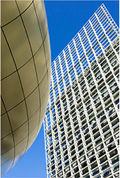Corrosion StudyCorrosion is the gradual degradation of materials (usually metals) from a surface as a result of chemical reactions such as oxidation. It can occur on large structures like aircraft engine parts, on watch surfaces, or even on tiny gold pads of a printed circuit board (PCB). Corrosion can degrade the useful properties of materials and structures, including their mechanical strength, appearance, and electrical properties, ultimately affecting product quality. ASMAC helps clients tackle corrosion problems by identifying the exact situation and detecting impurities that may be related to the root cause of the corrosion mechanism. Corrosion can be localized, forming pits or cracks, or it can spread across a wide area, corroding the surface more or less uniformly. In some cases, the situation is more complex because various surface coatings and passivation layers are applied to the original material as a form of protection. Analyzing only the exposed surface may not be sufficient to fully understand the problem. In such cases, careful surface treatment and sometimes cross-sectioning techniques are required to examine the underlying materials. The analytical techniques used may vary depending on the size of the corrosion site, the depth of interest, and the expected oxidizing agents. Typically, surface detection devices such as:
are used to observe the morphology of metal surfaces, electric contact interfaces, and analyze the compound formation of corrosion products. Metallographic examination is also conducted to analyze corrosion products and metallurgical structures. Common Applications
|
